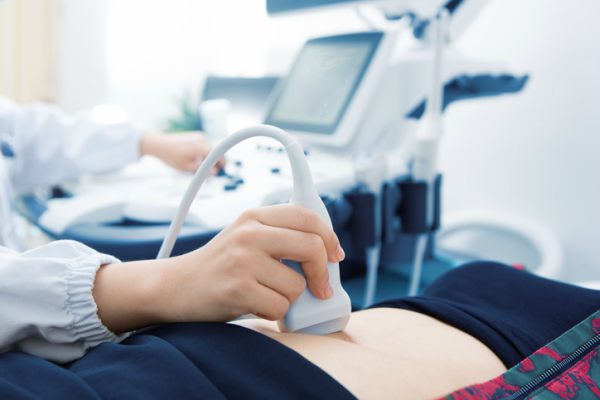Gynaecologist Gabrielle Downey explains what ovarian cysts are and what your doctor should do about them in this informative specialist’s guide
If you’ve got ovarian cysts, one thing to be sure of is that you’re not alone. Ovarian cysts are common with one in 10 of us having one at some stage of our lives that requires surgery. Ovarian cancer is relatively uncommon with only one in 1000 ovarian cysts being cancer in a pre-menopausal woman and three in 1000 in post-menopausal women.
Ovaries are designed to produce eggs each month (if you’re not on the pill). These eggs develop from follicles in the ovary at about day eight of the cycle and grow to about two centimetres before ovulation occurs. Some follicles get even larger and become a simple cyst of about less than five centimetres. This is something which doctors generally don’t regard as significant.
Medical guidelines suggest these can either be ignored or your GP should send you for a scan in about 12 weeks (guidance says one year but understandably, most women and GPs would prefer not to wait that long).
How are ovarian cysts detected?
The best way to test for a cyst is to be examined internally. Ovaries lie in the pelvis and cannot be felt on examination of the abdomen only unless they are very large and by ultrasound scan. The nature of the cyst is usually determined by looking at its size, if it has thin or thick walls, if it has one or many parts, if they are on one or both ovaries and if there is fluid behind the womb.
the best way to test for a cyst is to be examined internally
When should you go to your GP?
NICE (National Institute for Clinical Effectiveness which sets good medical practice) advise doctors what to do in certain circumstances. You should see your GP if you have any of the following symptoms on a persistent or frequent basis – particularly if they’re occurring more than 12 times per month:
- Abdominal distension
- Feeling full and/or loss of appetite
- Pelvic or abdominal pain
- Increased urgency of passing urine and/or frequency of symptoms
Your GP should take a history looking for weight loss and appetite changes. He/she should also ask about your family history of cancers as some can be inherited. This relevant as it may help detect a benign (not cancerous) explanation of symptoms. The most common causes of these symptoms in the absence of cancer are Irritable Bowel Syndrome (IBS), endometriosis, infections of the pelvic or other organs and bowel inflammation.
if you have a history of weight loss, a benign (not cancer) is a likely explanation of symptoms so tell your doctor
What tests do you need?
If your GP finds a simple cyst on a scan between 5-8 centimetres in diameter then they should repeat the scan within 12 weeks. If it persists or enlarges then you should be referred to a specialist. At least 60 per cent of such cysts will go away by themselves so there’s no need to panic.
If your cyst is less than five centimetres and complex then you need a blood test for tumour markers, called a CA125 test. These are chemicals made by the cysts and other tissues and will alert the GP to the possibility of cancer if raised. If they are raised don’t panic, the cysts can still be benign but you should be referred under what is termed a 2-week wait. If the levels are normal then a routine referral is all that is required.
Always report sudden change
The main problem with ovarian cysts is that they rarely cause symptoms unless they twist, rupture or bleed into themselves – this is termed a “cyst accident”. The woman usually complains of sudden onset severe pain. This is an emergency and should prompt either an examination by your GP or going to Accident and Emergency (or both).
ovarian cysts rarely cause symptoms unless they twist, rupture or bleed into themselves
There is a condition called “polycystic ovaries” which should not be confused with ovarian cysts. In polycystic ovaries numerous little follicles develop up to eight millimetres in diameter, they don’t cause pain and do not rupture/twist or bleed. They can cause a lack of periods and should be managed by weight loss (if overweight) or medical treatment depending on the symptoms.
READ MORE: 6 symptoms of PCOS not to miss
What actions should the GP take?
1. If the scan is normal but the CA125 level is normal or raised
He / she should look carefully for other causes of your symptoms. If no other cause is found then nothing is required. Bit if your symptoms or their frequency gets worse, do return to your doctor
2. If the scan is abnormal:
If it shows a simple cyst less than five centimetres it can be left alone. If the cyst is 5-7 centimetres in diameter, you should repeat the scan after around 12 weeks (60 per cent will resolve). If the cysts is seven centimetres or more in diameter you need to be referred to a gynaecologist.
if your doctor identifies the cyst as ‘complex and you;re post menopausal, he/she should do a CA125 test and then refer you to a gynaecologist. If you’re pre-menopausal and the cyst is less than five centimetres he/she needs to repeat a scan after 12 weeks. If it’s more than five centimetres, you will need an urgent CA125 test and referral within two weeks to gynaecology for further investigation.
Once you’ve been seen in hospital you will be offered surveillance (regular scanning and blood tests every four months for one year) or an operation. The type of operation offered depends on if the consultant believes your cysts to be benign or cancer.
So the above shows that a cyst on your ovary is common, almost certainly benign and may go away without surgery. Don’t Panic!
Dr. Gabrielle Downey is a Birmingham-based consultant gynaecologist. She has been a consultant gynaecologist at the Birmingham City Hospital for over 15 years. Dr. Downey publishes regularly in renowned journals and writes for medical textbooks, was a co-author to the current NHS cervical smear program, and has specialist expertise in problems such as abnormal smears among many other conditions.
READ MORE:
Designer vagina – do I need it?
This skin doctor has had acne since she was 11 – here’s how she beat it
6 symptoms of PCOS not to miss
Why sex hurts – the gynaecologist’s guide
Like this article? Sign up to our newsletter to get more articles like this delivered straight to your inbox.


























































